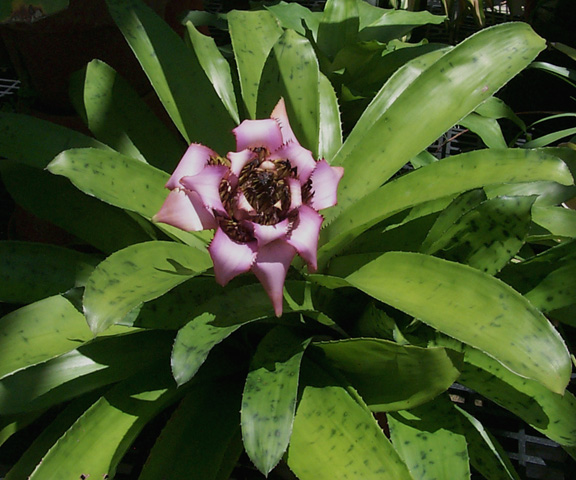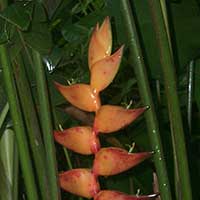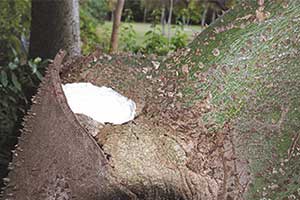
Practical IPM for the South Florida Homeowner

Much has been written about Integrated Pest Management (IPM) and how its implementation in agriculture and horticulture has reduced pesticide use. Releasing beneficial insects, alternating toxic chemicals with more benign ones to reduce insect immunity, and other elaborate programs are being utilized by commercial operations.
But what about the average homeowner? Are these programs practical and are they affordable? The average homeowner may not be aware of the many options available for controlling insect pests in their yard. To most people the use of toxic chemicals is the only solution that they are familiar with.
IPM for the homeowner can include many of the following methods: beneficial insects, baits, cultivation techniques, mulching and use of compost, controlled watering, and sanitation. These are all environmentally-sound methods that can be used to create a successful home-IPM program.
Beneficial insects are those that attack the insects that harm our plants. The use of these "beneficials" to control harmful ones is a great tool in the IPM arsenal if you have a large piece of property, say five acres, or if the insects that you want to control are in an enclosed area such as a greenhouse. In a small backyard the beneficials that are released could get blown next door by the wind or they could fly out on their own. That happens occasionally, so you may want to add some other practical methods for controlling the insect problems in your garden.
A useful beneficial for the homeowner is the nematode, microscopic nonsegmented worms. A small percentage of these are damaging to plants, but some are parasitic to various larva and grubs that can cause extensive damage to plants. Beneficial nematodes can be utilized as a soil additive in the control of many types of harmful insects.
Baits are also very practical for the home garden IPM. A good example of a bait is what currently is used for fire ant control. Granules are broadcast on the ground in areas that ants are known to occur, the ants are tricked into bringing the granules back to the nest as food, and when the granules are eaten, the ants are poisoned and die. This is an effective method for controlling ants because liquid sprays will not penetrate into the ant nest, so most of the ants, especially the queen, are not killed. Many baits are relatively nontoxic to mammals and birds, but will achieve effective control of grasshoppers, houseflies, and other noxious insects. (A word on toxicity: every substance has the potential to be harmful or toxic - even drinking water, when consumed in great amounts. A non-toxic chemical, therefore, should still be used judiciously.)
Cultivation techniques can also be used as an effective control for certain insects. Spider mites, microscopic members of the spider family, feed on the sap of plants. So do aphids and scale, members of another insect family. These can be controlled by removing the most nutritious food available, which is the sap in dying leaves or new growth (like flowers and flower spikes). This is not to say that you should prune all your foliage or flowers. In plants such as bananas, heliconias, gingers, palms and other related plants, pruning the oldest leaves, the ones that will yellow in a month or so, and the flower spikes when they emerge, will reduce the areas that these insects like to feed.
Ants can often be a source of aphids and scale found on plants. Certain species of ants actually farm these insects as if they were cattle. The insects are placed in a favorable feeding site and are protected from natural predators, such as wasps and ladybugs and their larvae (beneficials), by the ants. In turn, the ants receive the excess honeydew that is exuded from these sucking insects. Often the first indication of scale on a palm or any other tree is the presence of ants going up and down the trunk of the tree. If the ants are controlled at ground level (using baits), there will be fewer insects feeding on the tree. Without the ants' protection, these insects are more vulnerable to their natural predators.
Mulching and the use of "finished compost" should be part of the homeowner's IPM plan. The use of mulch controls weed growth, helps keep moisture in the soil, and builds up a layer of humus. Humus is the top layer of soil that is mainly decomposed organic matter and is a natural source of plant nutrients. The soil found along the east coast of South Florida generally has little organic material in it and will benefit from the addition of humus. Most plants will benefit from the addition of mulch on the soil. However, when adding the mulch, it should not be placed within six inches of the plant's trunk. This prevents "collar rot", a fungal condition that results from too much moisture on the trunk.
Fresh mulch consists of uniformly-sized wood and plant debris that has been passed through a wood chipper. It should be allowed to sit as a pile for at least a month. The heat generated by the initial stages of decomposition can reach over 130 degrees. Many pathogenic organisms are killed at this level of heat, so there will be less of a chance that you are importing something nasty to your garden. However, this heat can also cause damage to roots underneath the pile and ultimately kill a plant. In general, a composting pile should not be placed within 15 feet of any plant.
Finished compost, having passed the final stage of aerobic decomposition, can be a good planting medium. It will not break down any more and has a microflora that is very beneficial to plants. In addition, the microorganisms that brought about the decomposition are still active and are still seeking a source of food, which in some instances are fungi and nematodes that are harmful to plants.
Water is obviously a very important factor to plant growth. Whether a plant is in a container or planted in the ground, a water balance needs to be achieved. Once you have found this, many fungal problems can be avoided. Too much water can cause some plants to rot, and too little water can stress a plant enough to cause premature leaf drop and, eventually, death. Even if a plant has wilted and then recovered, permanent damage may have occurred to the stressed leaves, making them more palatable and nutritious to certain insects (like spider mites).
Adequate drainage for the plants' roots will reduce the chances of fungal problems. When you buy a plant at a nursery, there is probably some peatmoss in the soil mix and orchids are often potted in pine bark or tree fern. These soil amendments are good to grow certain plants in, but they all break down after a year or so. This causes inadequate drainage, leaving the plant roots wet most of the time, and with little oxygen. Wilting leaves are sometimes an indication of too much water and upcoming fungal problems.
Sanitation is a must in an IPM program. Unsterilized tools can transmit viruses and fungi from one plant to another. For example, in Florida, unsterilized pruning saws are transporting a fungi that is fatal to Phoenix palms. Weeding is another important method of sanitation. Not only does it look better, but removing unwanted plants can also remove a potential source of food for harmful insects such as White Fly, a minute fly that feed on the sap of plants. In South Florida, some plants that we consider weeds are the primary host to the types of insects that you would not want attacking your favorite plants.
These are some of the things that an average homeowner can do to develop a fairly sophisticated IPM program for their garden. These programs are practical. They are affordable, and they offer many benefits, such as reducing the use of toxic chemicals and increasing plant vigor.




 About Integrated Pest Management
About Integrated Pest Management An Experiment in Arboriculture and Mosquito Control
An Experiment in Arboriculture and Mosquito Control German Cockroach Control through IPM
German Cockroach Control through IPM An IPM plan for the Control of Phtyophagous Mites on Musoid Plants
An IPM plan for the Control of Phtyophagous Mites on Musoid Plants An IPM program for growing tropical plants using cultivation techniques
An IPM program for growing tropical plants using cultivation techniques Practical IPM for the South Florida Homeowner
Practical IPM for the South Florida Homeowner